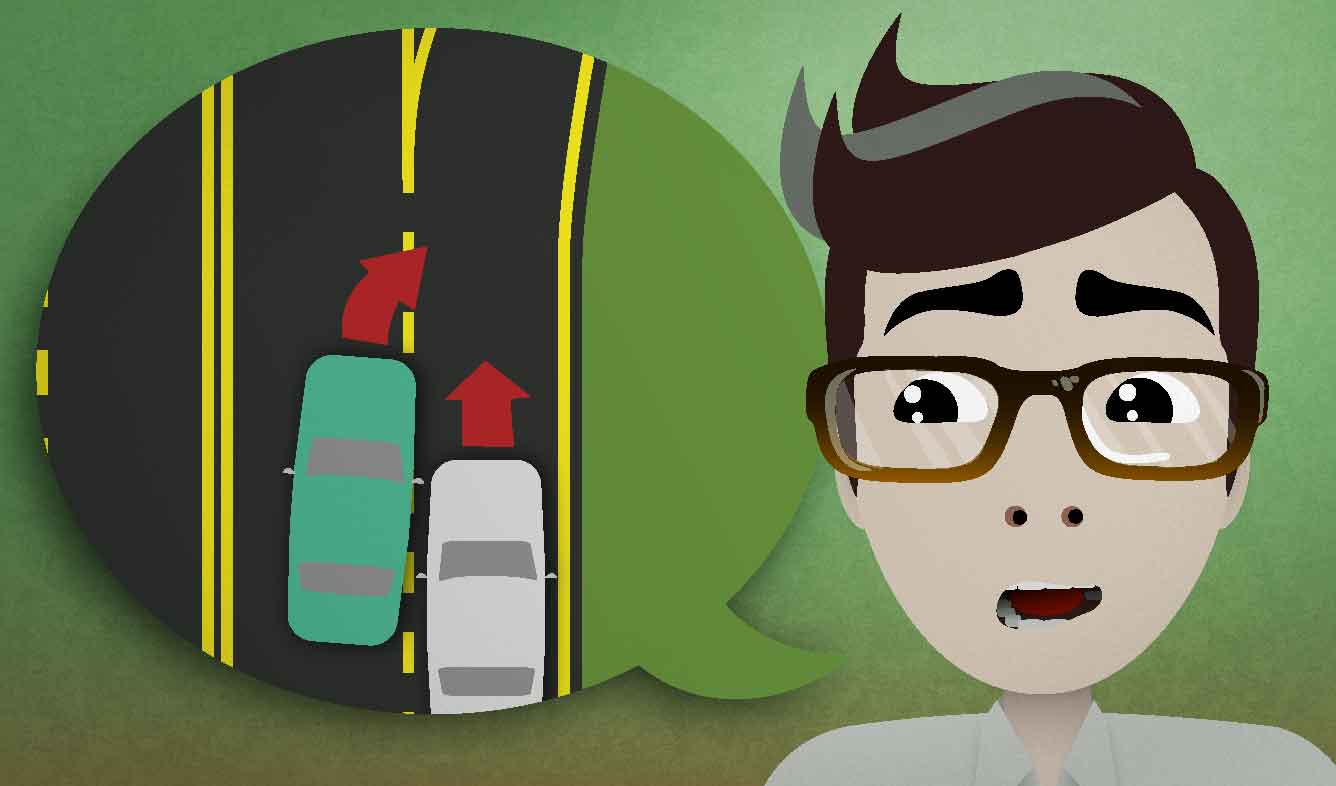“I tried to merge into the right lane, but there was a car in my blind spot.”
You almost got in a car accident earlier today. Now you're describing what happened to a friend of yours. This is how you describe the accident.
I tried to merge into the right lane, but there was a car in my blind spot.
Want Video and Sound? Follow us on YouTube

There is/are (something)(somewhere)
It's common to use "there is ___" or "there are ___" when you're describing a scene or situation:
When you go in his office, there are books scattered all around.
You could also describe a scene this way:
When you go in his office, books are scattered all around.
But that's not as common, because it doesn't communicate the sense that you're giving a description. It sounds more like you're stating a fact. "Facts" are pieces of information like this:
Math textbooks cost a lot of money.
But a "description" has a slightly different feeling. It kind of invites the listener to imagine that they are in the situation you're describing:
There was a math textbook at the campus bookstore that cost a hundred and ninety dollars!
So when you're describing a scene, it's more common to use "There is", "There are", "There were", etc.:
There were books scattered all over.
merge (into a lane)
The sections of a road that are marked off by lines are called "lanes". Some roads are "two-lane roads", with each lane going in the opposite direction. Other roads are four or more lanes.
When you're driving forward, and you move your car from one lane to another lane going in the same direction, you're "merging into" the new lane. For example, on a four-lane road, you might need to merge into another lane in order to pass a car that's going slowly in front of you.
You also "merge into" a lane when the one that you're driving in ends.
Here are some examples of using "merge":
Road ends 500 feet; merge left (Seen on a road sign)
I get nervous when I have to merge onto the highway from the ramp and everyone's driving a lot faster than me.
(someone's) blind spot
When you're driving, you can see cars behind you through your mirrors. You can also see cars that are in front of you or right beside you. However, there's an area that's hard to see, which is slightly behind and to the side of your car. This area is called your "blind spot".
Driving instructors will tell you to "always check your blind spot".
